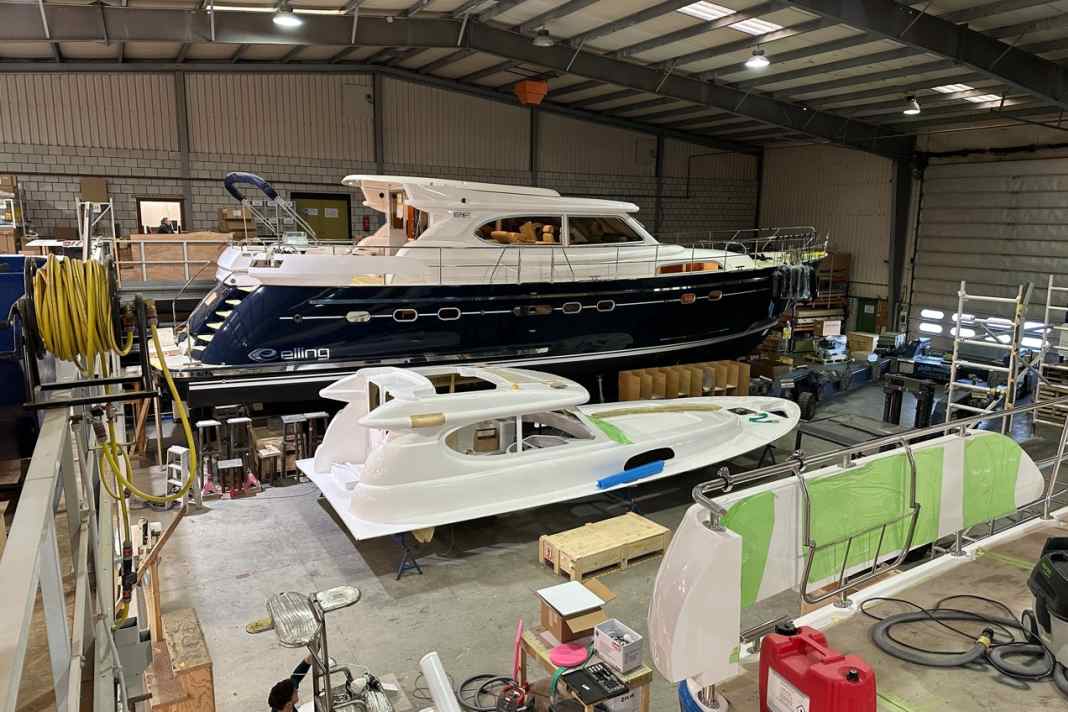





A text by Nakomis Nelson
This was the kind of darkness where it is difficult to recognise the boundary between sea and sky. The fog wasn't helping. It condensed on everything and required the intermittent use of the windscreen wipers, a metronome of monotony. Daylight came, but so did the ice. We had seen a few larger icebergs on the radar. Just a day before, the area we were now crossing seemed impassable on the Danish ice maps.
The sea ice further north along the Greenland coast broke apart and was sucked southwards in large floes by the East Greenland Current.
We had set off from Iceland two days ago, taking advantage of the narrow weather window between Greenland and Iceland in July. Weeks of fog and cloud cover had rendered all recent satellite photos useless, and we were hoping that a waning northerly storm would break up the sea ice near the eastern entrance to Prins Christian Sund, a continuous fjord system that forms an inland passage across southern Greenland. If we could not find a passage, we would be forced to sail some 250 nautical miles further to round Cape Farvel at the southern tip, a place where fog, ice, currents and storms often create the most dangerous sea areas in the world.
As I checked the radar and the FLIR thermal image on the multifunction display, my heart skipped a beat - or maybe three. I reached for the throttle, put it in reverse to stop the movement, and then put it in neutral, fearing that ice might get stuck between the hull and the propeller blades. On the FLIR display, which didn't have the range of our radar but could detect ice, bright white swirls appeared, giving us enough time to change course. On our 4200 nautical mile odyssey across the North Atlantic and through some of the most remote waters on earth, the system proved itself many times over.
The right boat for your Greenland trip
The list of powerboats under 70 feet that are suitable for high-latitude adventure cruising is small, and it gets even smaller when the boat is also intended to serve as a weekend boat in its home waters on the Atlantic coast of the US state of Maine. In November 2022, we decided in favour of a Elling E6 . It is a 65-foot-long, self-righting semi-displacement yacht with a stern garage for a jet tender, an auxiliary engine with its own shaft and propeller, which can reach speeds of over 16 knots if required, and a Kevlar-reinforced hull.
The shipyard was also willing to work with us on a whole series of modifications for our departure to the Arctic in the summer of 2023. We wanted to bring the boat back across the Atlantic to Maine on its own keel - and the northern route via Iceland and Greenland that the Vikings had already used. On this route, service facilities are sparse at best, and a high degree of self-sufficiency is crucial.
So one of the major changes was that we removed two TV satellite domes and designed a new electronics mast for key equipment such as the Starlink satellite dish, the FLIR thermal imaging camera and the Perko Solar Ray searchlight.
We also added a second anchor winch (an electric model alongside the hydraulic one), a drinking water purifier and a fuel purification system. I supervised the process as skipper, which meant numerous trips to the Netherlands in autumn and winter. A few days before our departure, the Elling shipyard added bookshelves in the saloon, and on 3 July we christened the "Archimedes" and launched her with the Travelift in the Maas.
Up the east coast of England to Orkney
After a celebratory dinner in the walled city of Heusden, we woke up the next morning and headed for the North Sea via Rotterdam. The miles and hours flew by and our attention was increasingly focussed on a developing area of low pressure in the English Channel. Instead of spending a cosy night in Scheveningen, we headed into the gathering darkness and faced the strongest summer storm ever recorded in the Netherlands. I pointed our bow towards Lowestoft, England, and used all 900 horses of our Volvo D-13 to cover the approximately 100 nautical miles at a constant speed of 15 to 16 knots.
In the early hours of the morning, we were accompanied by furious breakers, lashing rain and gale-force winds. But we had made the right decision.
Another fast leg took us up the east coast of England to the Tyne Estuary, where we prepared for a pre-dawn departure to make the 250 nautical miles to Orkney before dark. The Elling's cruising speed was a real advantage and we reached our destination just before sunset on the day of the summer solstice.
On our second day on the Orkneys, I proposed to my partner Haley, who has a nice shot of Scottish blood in her veins, during a long walk to the famous whiskey distillery in Scapa. We celebrated and set off the next day for the Faroe Islands, another long haul that would take us across the high seas for the first time.
Part 2 of the trip with the Faroe Islands and Iceland will follow shortly.

